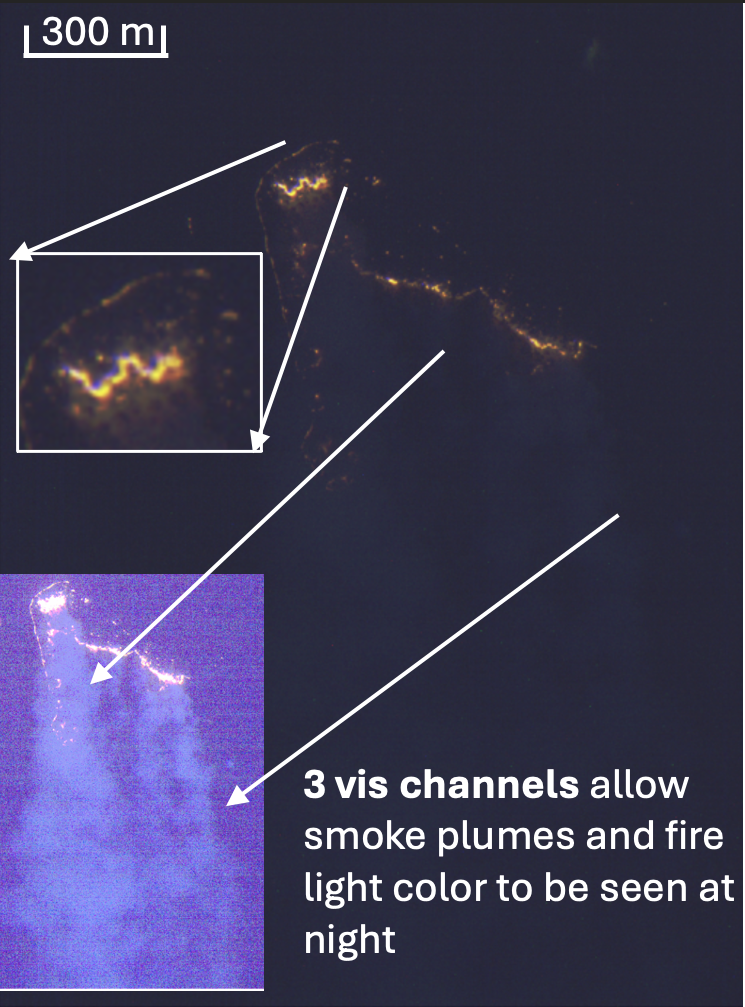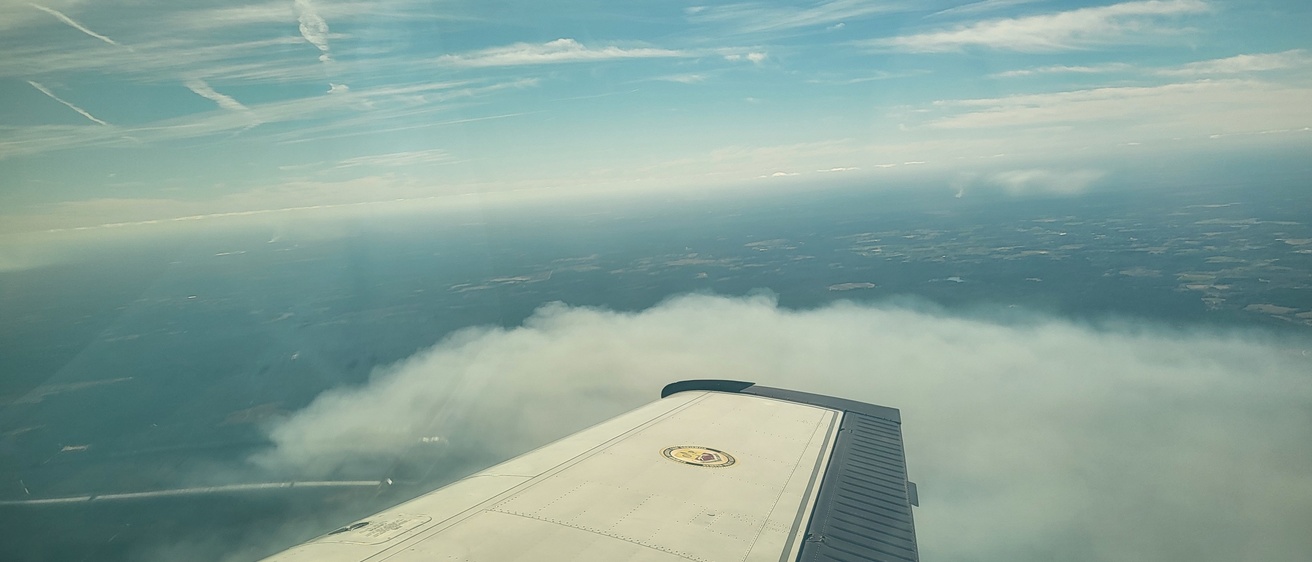
University of Iowa engineering students, supported by the Operator Performance Laboratory (OPL), took to the Georgia sky to capture data that could enhance the ability to remotely detect wildfires.
An instrument developed at Iowa called NightHawk was the catalyst for the research. The low-light imaging sensor is designed to collect nighttime ground data via four 2D imagers with primarily visible wavelengths, including a red, blue, green and near infrared channel.
“This allows us to do several things, such as classify light sources and fire lines,” said Steve Tammes, citing NightHawk’s ability to distinguish a fire from other types of light. “The classification of light sources means we can identify and quantify forest fires as they occur at night at the interface of wildland and urban areas.”

Tammes and Will Julstrom, both graduate students studying chemical and biochemical engineering and research assistants at the Atmospheric and Environmental Research (AER) Lab, conducted the research at Fort Stewart, a United States Army post in Georgia. OPL members Randall "Tarzan" Marzen, Spenser "Savage" McIntyre, and Todd Gibbs provided air support in OPL’s Beechcraft A36 Bonanza, from which NightHawk was mounted to gather data.
Both AER and OPL are part of Iowa Technology Institute, a research arm of the College of Engineering.
The Iowa team was invited to Fort Stewart where controlled burns of tens of thousands of acres are conducted for research as part of the Wildland Fire Science Initiative.
“This gave us a good opportunity to measure a relatively large fire and inform fire fighters and forest services of the location of the fire lines and flame front,” Julstrom said.

NightHawk was designed by Jun Wang, James E. Ashton Professor of Engineering, interim departmental executive officer of chemical and biochemical engineering, and AER director. Wang’s research focus includes remote sensing and wildfire detection.
The project is part of a campus-wide initiative to extend Iowa’s success in space-based research. The initiative received $3.6 million over three years through the competitive, campus-based grant program funded through the university’s public-private partnership (P3) with its utility system.
The initiative is led by an interdisciplinary team including Wang and Tom “Mach” Schnell, Captain Jim "Max" Gross Chair in Engineering and OPL director; Marc Linderman, a geographical and sustainability sciences associate professor; and Phil Kaaret, formerly a physics and astronomy professor who now works at NASA’s Marshall Space Flight Center.
The data collected by NightHawk will be used in a proposal, in collaboration with NASA Ames Research Center, for a future satellite mission.

